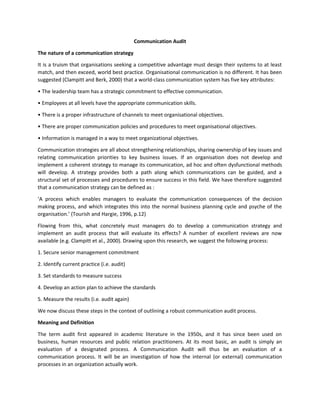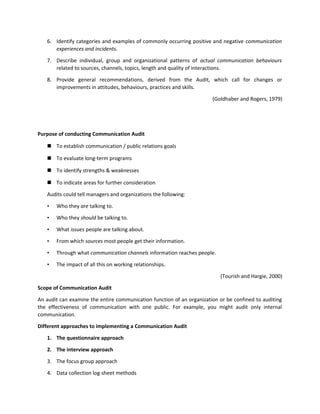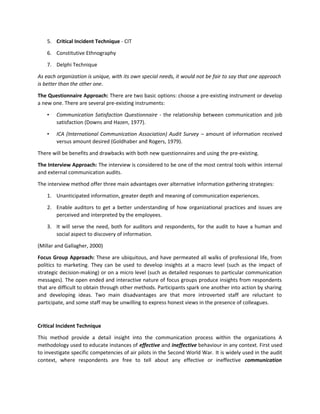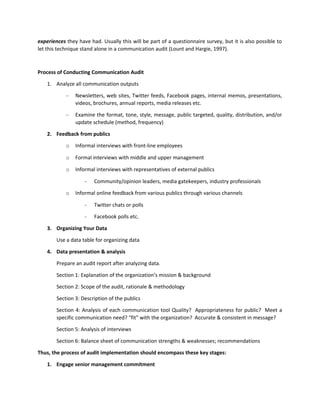The document discusses communication audits, which involve evaluating an organization's communication processes and systems. A communication audit aims to determine if all stakeholders are receiving intended messages, identify strengths and weaknesses, and indicate areas for improvement. The key steps of conducting an audit involve securing management commitment, identifying current practices, setting success standards, developing an action plan, and measuring results. Common audit methods include questionnaires, interviews, focus groups, and analyzing communication outputs and stakeholder feedback. The goals are to improve communication quality and relationships within the organization.






